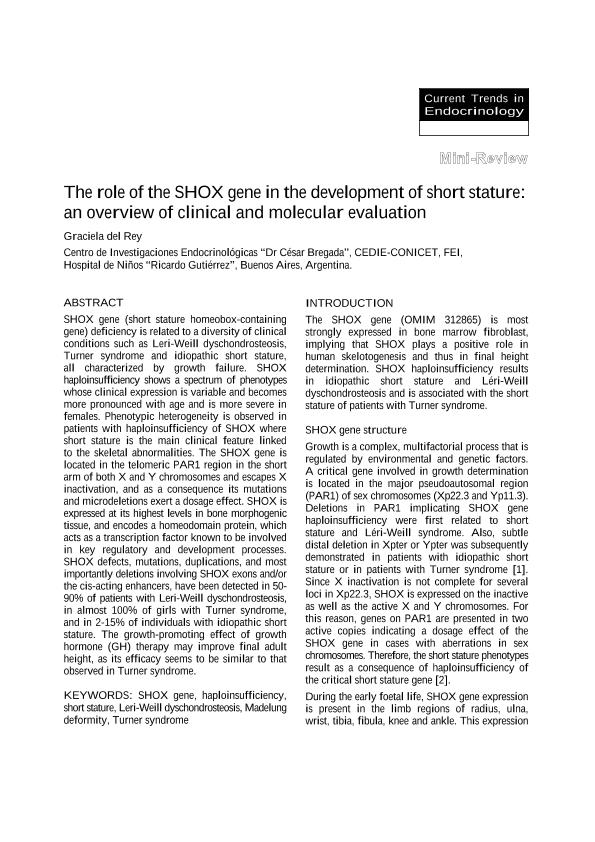Artículo
The role of the SHOX gene in the development of short stature: an overview of clinical and molecular evaluation
Fecha de publicación:
12/2016
Editorial:
Research Trends
Revista:
Current Trends in Endocrinology
ISSN:
0972-947X
Idioma:
Inglés
Tipo de recurso:
Artículo publicado
Clasificación temática:
Resumen
SHOX gene (short stature homeobox-containing gene) deficiency is related to a diversity of clinical conditions such as Leri-Weill dyschondrosteosis, Turner syndrome and idiopathic short stature, all characterized by growth failure. SHOX haploinsufficiency shows a spectrum of phenotypes whose clinical expression is variable and becomes more pronounced with age and is more severe in females. Phenotypic heterogeneity is observed in patients with haploinsufficiency of SHOX where short stature is the main clinical feature linked to the skeletal abnormalities. The SHOX gene is located in the telomeric PAR1 region in the short arm of both X and Y chromosomes and escapes X inactivation, and as a consequence its mutations and microdeletions exert a dosage effect. SHOX is expressed at its highest levels in bone morphogenic tissue, and encodes a homeodomain protein, which acts as a transcription factor known to be involved in key regulatory and development processes. SHOX defects, mutations, duplications, and most importantly deletions involving SHOX exons and/or the cis-acting enhancers, have been detected in 50-90% of patients with Leri-Weill dyschondrosteosis, in almost 100% of girls with Turner syndrome, and in 2-15% of individuals with idiopathic short stature. The growth-promoting effect of growth hormone (GH) therapy may improve final adult height, as its efficacy seems to be similar to that observed in Turner syndrome.
Archivos asociados
Licencia
Identificadores
Colecciones
Articulos(CEDIE)
Articulos de CENTRO DE INVESTIGACIONES ENDOCRINOLOGICAS "DR. CESAR BERGADA"
Articulos de CENTRO DE INVESTIGACIONES ENDOCRINOLOGICAS "DR. CESAR BERGADA"
Citación
del Rey, Graciela Monica; The role of the SHOX gene in the development of short stature: an overview of clinical and molecular evaluation; Research Trends; Current Trends in Endocrinology; 8; 12-2016; 65-68
Compartir




